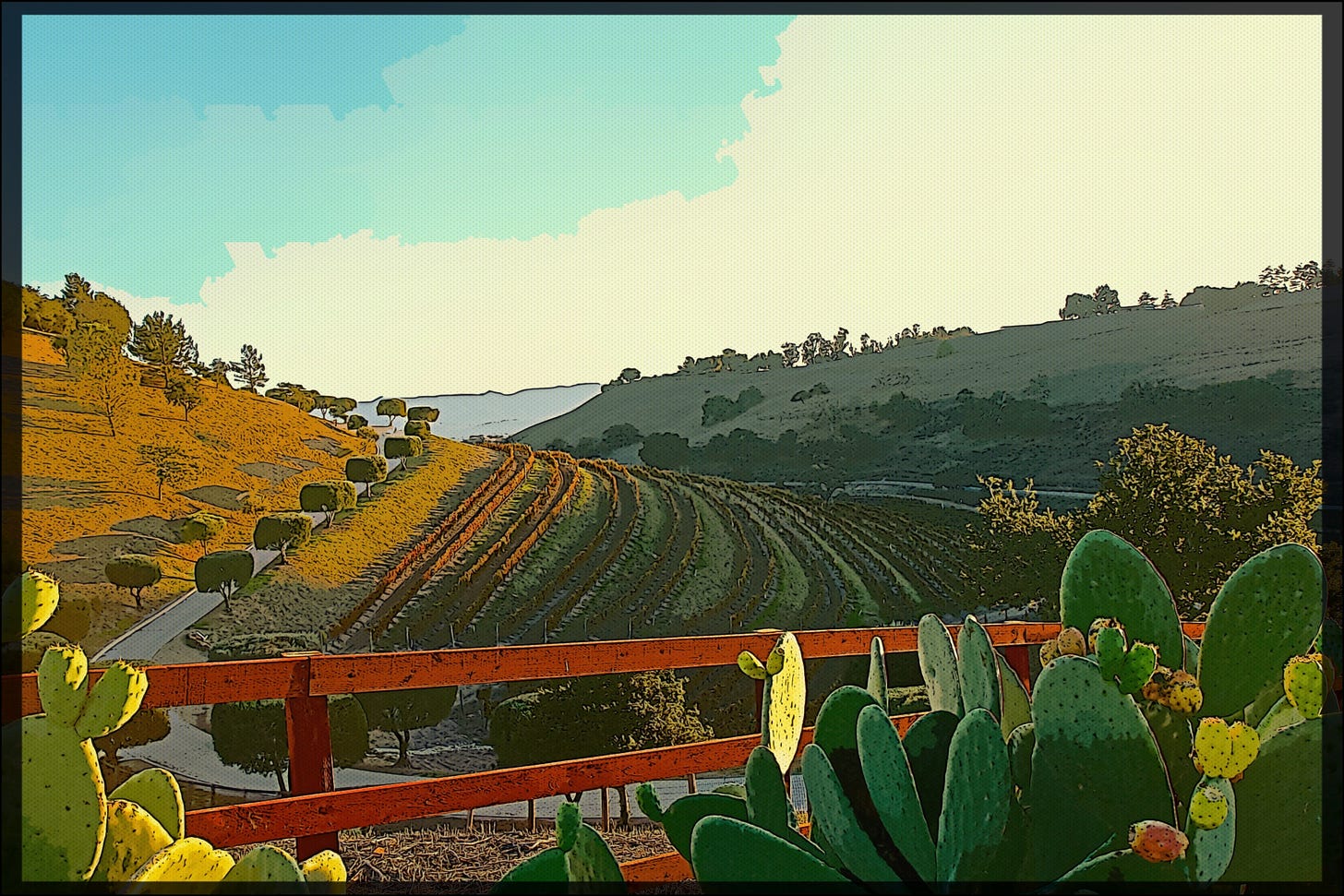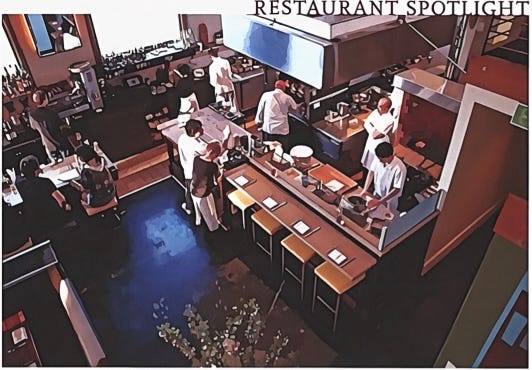
By 2010 I was hearing it in Lodi, then in Sonoma, San Francisco and Santa Barbara, at the Hospice du Rhône in Paso Robles, and even in D.C. while on a sight-seeing vacation. Everywhere at that time, concerned citizens in the wine industry were posing this question: If American grown Syrahs are so good, why aren’t they selling?
You could blame the Aussies for flooding the market and ruining everything for the Americans, or you could say that consumers haven’t had that one or two high-visibility brands (like a B.V. or Silver Oak Cabernet Sauvignon) to give them an idea of what American Syrah is all about.
One explanation (which I find quite lame) was there is so much variability in style and quality of Syrahs, Americans don’t know what to expect out of the varietal—as if there hasn’t always been huge variability of style and quality among Chardonnays, Cabernet Sauvignons, Merlots, Zinfandels, Pinot Noirs, Sauvignon Blancs, and every other popular wine of the recent past. Wine consumers aren't that stupid. In fact, variability is a good thing. Always keeps them interested.
Then, of course, you could also say that it’s the economy stupid. The theory that consumers are less apt to "experiment" with their wine expenditures during periods of recession, which never seem to cease (when are we not in a recession?). Which doesn’t quite explain why retailers always seem to have a field day selling all the latest oddball wines from Europe or the Southern Hemisphere, no matter what the name, grape or appellation. Consumers are more than willing to experiment⏤at all times.
Syrah as a trend may have missed the boat, but when it comes to what we do in restaurants, we really shouldn’t give a damn what a trend might or might not be. If you find a great American Syrah to sell—and make no mistake, American Syrahs are now good enough to be considered among the best in the world, notwithstanding any $200 Côte-Rôtie or "ancestor vine" Barossa Shiraz—then you should be able to sell it, no problem. It's quality that usually sells and makes a restaurant look good, not status or trends.
Imagine if chefs took the same cowardly attitude as most restaurant wine buyers. Saying, all people want is hamburgers, steaks and pepperoni pizza, therefore that’s all we can offer on our menus. What a sorry turn our recent culinary history would have taken—no Wolfgang Puck smoked salmon and caviar pizza, no Thomas Keller oysters and pearls, no Matsuhisa miso black cod… heck, no place to go for sweetbreads or simple tiramisu, vine ripened tomatoes or grass fed beef, mozzarella di bufala, Jamón Ibérico, blackening spices, culinary foams, or anything beyond what our grandmas used to cook or what dad brought home from the drive-in.

Point being: Consumers always love new and different things, especially when it's good. If you can’t sell an extraordinary wine—especially one that optimizes your cuisine—just because it’s unfamiliar to your guests, then what’s wrong is probably your attitude or fortitude, your management hiring or staff training, and probably your merchandising or lack thereof. Certainly nothing wrong with a perfectly good wine, such as Syrah. Yet as anyone in sales knows, normally you do not expect a consumer to come to you. You have to go to them and explain why they should buy an outstanding product. Restaurant wine sales is no different.
Back in the mid-'80s and 1990s, the three big things were the “fighting varietals”—Cabernet Sauvignon, Chardonnay and White Zinfandel. Needless to say, you could always find restaurateurs here or there who resisted the compulsion to play within the rules, even though at one time some 90% of our restaurant sales consisted of just those three assembly line varietals.
If there had been absolutely no resistance among the ranks, ideas such as Oregon Pinot Noir with tuna, Grüner Veltliner with oysters in zingy vinaigrettes, red Zinfandel with dry rub or Asian spiced ribs, or Bandol reds and rosés with earthy or briny combinations of seafood would have never caught on. But they did, probably thanks to the contrarians in our industry. Aren’t you glad that, today, we are no longer stuck in a Cabernet/Chardonnay/White Zinfandel rut?
Once, just after the 2008 market crash for a piece going into a wine industry publication, I polled a number of top wine buyers across the country and asked them what they’ve been successfully selling to survive that particular period of economic downturn. Some of the answers were surprising. It seemed clear that many buyers were operating within their own worlds, blissfully unaware of what others were doing.
Talking about sales in the 70-plus locations of Morton’s steak houses, for instance, corporate buyer Tylor Field III reported, “Riesling is exploding in popularity.” I'm sure Field was as surprised as anyone by that fact⏤most sommeliers at the time would say they couldn't give Rieslings away⏤although more predictably, Field added that “Malbecs from Argentina are a hit with our steaks.”
The late, great Sandy Block MW, who presided over the wine program for over 30 Legal Sea Foods locations on the eastern seaboard, reported that his wine lists had recently expanded aggressively into “Chile, Argentina, Loire Valley, Alsace, southern Europe (Spain and Southern Italy), Rhône Valley, South Africa, Portugal and New Zealand.” His conclusion: It was a good time to diversify because⏤presumably prompted by the plethora of value priced imports popping up in the market⏤guests were suddenly interested in, well, diversity.
I liked the response of Chris Deegan, the former wine dude at the ultra-chic nopa in San Francisco, who reported that they had been going full steam into, as he put it, the “shady edge of winemaking”—especially “lesser known wines from well known wine regions.” For nopa, this included crus Beaujolais and reds from Austria and the Loire Valley; “new” Spanish DOs such as Ribeira Sacra, Bierzo, Montsant, and Yecla; Cheverny, Cour-Cheverny, Muscadet, and Touraine in France’s Loire River; plus increased selections from Mendocino and Lake County as "up and coming" places, and fewer wines from Napa Valley.
Deegan, it seemed, had found a good niche, working with something of a captive, open minded Bay Area audience.
When asked if it was the economy that was pushing him into what he was calling “unusual values,” Deegan agreed and disagreed, saying that recent sales reflected “more of an opportunity to sell some beautiful inexpensive wines rather than a burden brought on by necessity.” In other words, Deegan was using the challenging economy as an excuse to do what he likes to do, which is sell wines for wines' sake. Nothing wrong with that. It is the instinct of all consumers to sniff out the best, the latest, the most interesting or hard-to-get products, which gives on-premise buyers more than enough daylight to break out of ruts and impositions set by markets.
Consumer preferences are never nearly as unyielding as you may think. They are, however, if you always yield to them.
Like Deegan, Jesse Rodriguez of San Diego’s The Grand Del Mar had always sought wines that are “hot and under the radar.” His specific mentions included Toro, Campo de Borja and Somontano from Spain, Côtes de Bourg, Monthélie and Côte-Chalonnaise in France, Italy’s Marches and Colli Euganei, and Argentina’s Rio Negro, San Juan and Neuquén as wines of “quality that over-deliver for what they cost”⏤a laudable attitude for a sommelier presiding over a wine program in which $200, $300 bottle sales of the usual suspects (dominating The Grand Del Mar's telephone book-sized list) was par for the course.
Rodriguez, that is to say, needed to explore alternative wines because if he didn't⏤I got the impression⏤he'd be bored to tears. Nothing scarier than a bored sommelier. He also admitted executing his own versions of bait-and-switch based upon sensory principles. For instance, if a guest expressed a preference for big reds, instead of offering the usual high priced California Cabernet Sauvignon “we take them to Toro and show them something that has the rich, fleshy taste profile they are after." This, undoubtedly, were the things that made Rodriguez's day.
Speaking like the brave sommeliers of the past, who steered our industry through those dark days of White Zinfandel and Chardonnay-with-everything, Rodriguez said, “We are even more focused on lesser known wines and small producers than ever before… our guests are excited to see what’s out there, and they are getting out of their comfort zone.” In other words, if you’re excited about something and are savvy enough to convey that, your guests will feel the same.
Ergo, you can sell anything. Maybe even Syrah!





Great piece, RC! Thanks for sharing!! I've been impressed by Marietta's Gibson Block expressions from the McDowell Valley in Mendocino lately. I think they are among the oldest (if not the oldest) Syrah and Grenache vines in California and make wines of great intensity & complexity.
https://www.wine.com/product/marietta-cellars-gibson-block-red-wine-2019/1023801
Would love a way to know who these folks are that are looking for small producers with great wine at this time. We’ve have a hell of time finding accounts this year and with the distributors so saturated… whew! Glad to hear consumers are interested in trying so many unfamiliar varietals / regions though